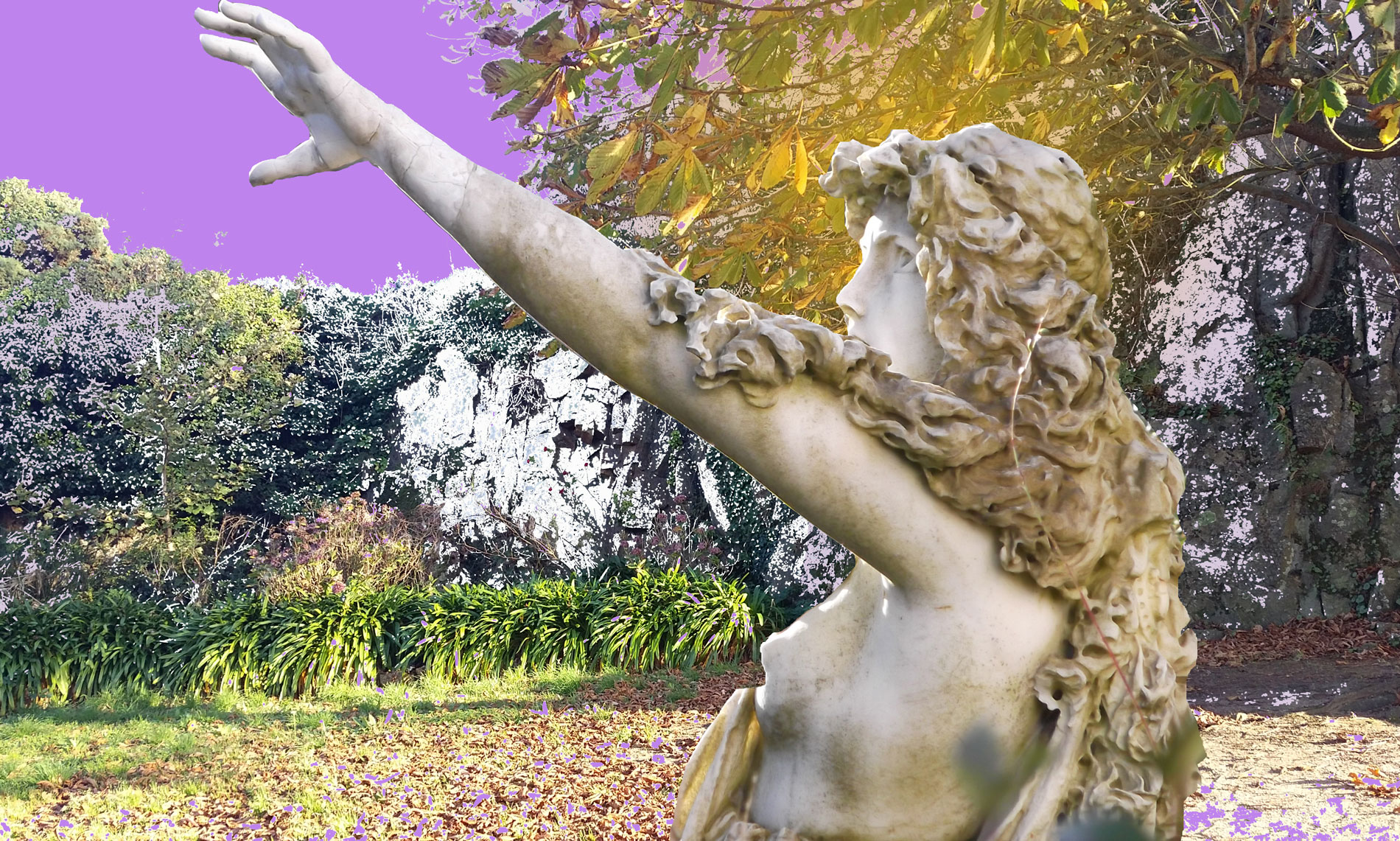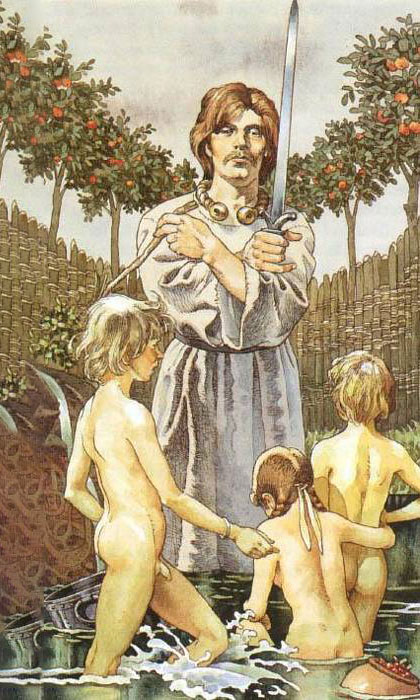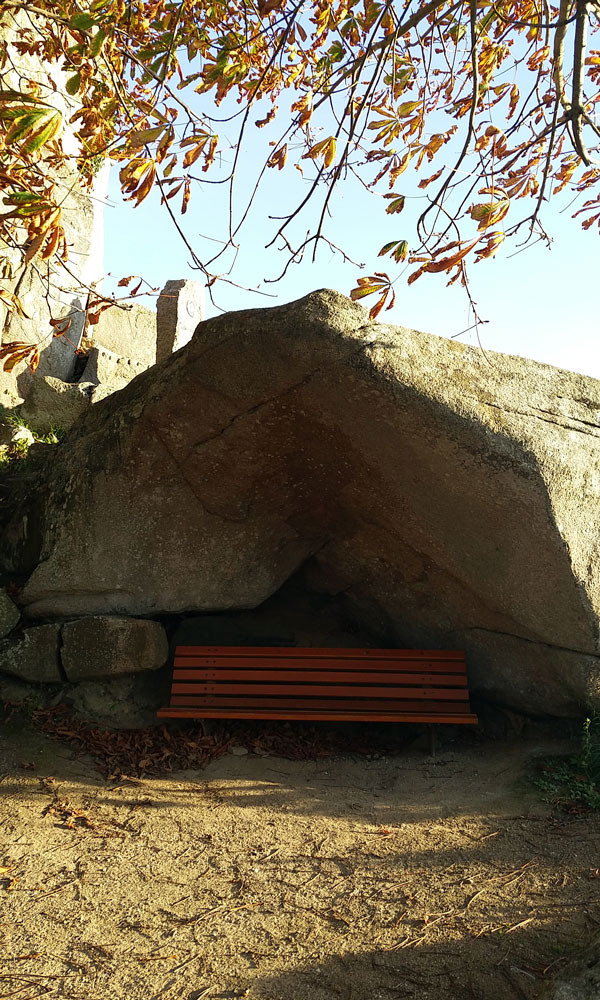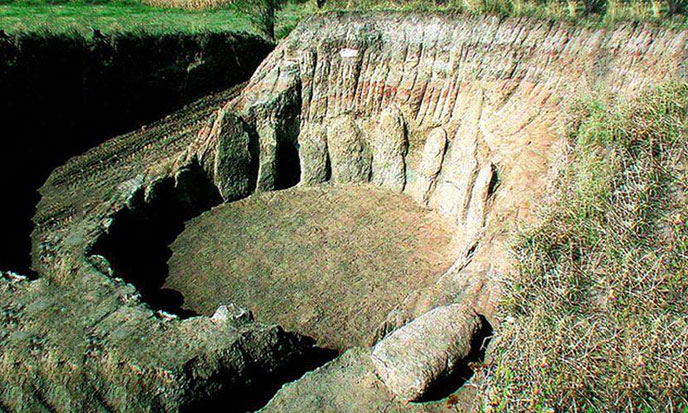
There are still many megalithic monuments around the world whose type and function have escaped archaeologists. Some of these monuments are not even considered as such. Archaeologists and geologists take them for natural rocks.
Among them, there is what I named baptism quarries. Their origin is Druidic, ie pre-Celtic. Contrary to what one might believe, baptism is not a Christian invention: it existed long before, in the cult of Mithras, but also in the Gospels. Jesus was baptized by John the Baptist, who was not a Christian, but whose practice was part of an ancient tradition, very ancient indeed. I found this type of quarry in Brittany, on the Channel Islands as on the island of Bréhat,see the images at the head of the article and below in Wiltshire and Wales, but also in Bulgaria,see the last image Switzerland, Sardinia, Morocco, Montana and Bali. I am sure these quarries are everywhere where there are megaliths, pyramids and cyclopean walls.
In truth, it is not a baptism in the Christian sense of the term, although all aspects of Christian ritual are found therein. We know that neither the Celts nor the Gauls were the builders of megalithic monuments. They used them because they were there already. In some cases, their use is consistent with the original purpose of the megaliths. But not always. Let us not forget that the megalithic worldwide civilization had been extinct for many millennia when the first Celts appeared.
 The image on the left represents a prominent Tuatha De Danaan –god Diancecht baptizing three children, two boys and a girl, just like John the Baptist in the waters of the Jordan. The baptized are naked, since nudity means purity and innocence, necessary conditions for baptism. Diancecht is the son of Easarg and the father of Cian, so Lugh’s grandfather. He also has a daughter Airmed, Measure, and two other sons Miach, Boisseau and Ormiach, twin-doublon of the previous one.
The image on the left represents a prominent Tuatha De Danaan –god Diancecht baptizing three children, two boys and a girl, just like John the Baptist in the waters of the Jordan. The baptized are naked, since nudity means purity and innocence, necessary conditions for baptism. Diancecht is the son of Easarg and the father of Cian, so Lugh’s grandfather. He also has a daughter Airmed, Measure, and two other sons Miach, Boisseau and Ormiach, twin-doublon of the previous one.
In the story of Cath Maighe Tuireadh (battle of the plain of the pillars) he heals and restores the wounded, he raises the dead by immersing them in the Fountain of Health while singing ritual and magical incantations; Airmed collects medicinal plants for the Fountain. When Nuada Airgetlam has his arm cut in the first battle, he makes a silver prosthesis to erase the infirmity and restore him to Sovereignty. (source)
But I quote above all this very ancient god to show one of the possible origins of baptism, whose ritual is well before John the Baptist, Jesus, and his Christianity. In my opinion, Celtic baptism was taught to humans by a Hyperborean, Mithras, whose cult and biography have troubling resemblances to the life of Jesus and Christian rituals. This is not surprising: the religion of Mithras was already called Christianity, except that Christ was then Mithras. After the Christs Osiris, Henoch and Orpheus, and before Constantine Christ …
Rite of baptism
At the full moon of the beautiful month of May 1992, in a quarry of Brocéliande, I relived the entirety of a druidic baptism. Here is the exact ritual, and the inner sense. The quarry adjoins the Fountain of Youth a few steps from the Tomb of Merlin, an ancient long barrow of which only three stones remain. Neglected in the 90s, this quarry has since been recognized as a sacred place of the Old Religion. It hosts a multitude of votive stones, skilfully stacked, that respond to greetings scribbled on a piece of rolled paper that the plaintiff fits into a slot of the Tomb of Merlin.
Like other initiation ceremonies, the baptism ceremony was held during the Beltane Festival in May. We find “baptême”baptism in French in Beltane’s phonemes, in order to dispel any doubt about the Druidic origins of this initiation. Beltane is the time of choice for the rites of passage between the cold and warm periods, between darkness and light, between symbolic psychic death and spiritual rebirth. In general, Beltane is the feast of changing the rhythm of life. From the winter rhythm, we move to the summer rhythm. The feast marks this passage both physically and spiritually. The ancient rites of confinement in the dolmens chambers were perhaps happening during the Beltane night. (source)
 All the children born since the last feast of Beltane, therefore less than a year old, receive this first baptism. At the age of 7, one again, this time they engage without the support of parents and/or that of godparents. At the age of 14, the true warrior initiation is given to both boys and girls, since girls take part in the fighting either directly by arms, or by magic where they excel.
All the children born since the last feast of Beltane, therefore less than a year old, receive this first baptism. At the age of 7, one again, this time they engage without the support of parents and/or that of godparents. At the age of 14, the true warrior initiation is given to both boys and girls, since girls take part in the fighting either directly by arms, or by magic where they excel.
The baptism of toddlers happens this way. The celebrants are a great druid and a bard. A large crowd is massed around the quarry. They scream, they sing, kids are running around making all sorts of pranks to the audience. At the arrival of the druids, silence is needed. The child’s father walks in front, followed by the mother carrying the baby. Father and mother can be replaced by grandfather and grandmother, or godfather and godmother. On the threshold of the quarry, the father strikes his foot several times, according to an invariable rhythm, to ask the spirits for permission to enter the sacred quarry. At this signal, the faithful of the first circle follow the foot beat of the father, reproducing in their turn the rhythm proper to the place. The first circle of the faithful –a hundred people– is rippled as the rhythm operates. And the movement of bodies in synchronous swing becomes hypnotic. Behind this first circle, the crowd around is won by the trance. A slow chant, chanted by all the mouths, adds to the power.
At this moment, the crowd focuses on the child in the mother’s arms. She hands it over to the father, who stands perfectly still. When the whole assembly is centered on the child, the great druid makes a sign to the father who comes towards him. Drawing from the collective concentration the confirmation of his power of vision, the druid “sees” the barda (= karma) of the child. He immediately infers the kind of education that suits him. Then the druid puts his hands on the child’s skull and gives him his name. He speaks low so that only the father can hear. This secret name will serve as a mantra for the use of the father, for his work of initiator. The father is the first initiator of the child. At the age of 14, the secret name will be revealed to the young, and will become his first name. At the age of 21, the adult will find himself his second name, which he will wear for the rest of his life.
Only his intimates can call him by his first name, which has the power to return him to the innocence and fullness of childhood. Whoever uses this secret name ensures power over the named person. At the age of 14, the secret name becomes the initiatory name, and thereafter remains what may be called a taboo name. A relic of this beautiful tradition can be found in the affectionate nicknames parents give to children, who will try to hide it as they grow up.
The bardaFrench word is the Celtic equivalent of Hindu karma. The modern sense of this French word has become “mess, stuff” after being soldier’s equipment. The origin of this word is Celtic, as evidenced by the phonetic resemblance between bard and barda. The Arabic word al barda —presumed etymology– signifies the yoke, which weighs, is also derived from the Celtic. The Book Of The Tibetan Dead, Bardo Todol,no connexion with Brigitte Bardot further reinforces the universal meaning of this word from the primordial language. Like karma, the barda is the previous experience that each one carries all life long –at least until he has received the initiation to the little mysteries that I call arcana XIII, in reference to the initiatic tarot of Jean-Claude Flornoy. (source)

The four elements
Then the father returns to the threshold of the quarry where the mother stayed. Together they advance to the bard-beadle who will record the child’s marital status – or rather his bardic state. The bard “hears” the names by the third ear and records them … in music! He composes a musical mantra, which is personal and which will serve to refocus the child. The bard is the second teacher of the child, after the father and before the great druid. Equivalent to the teacher, but on the sacred level, the bard will often have the opportunity to play this musical mantra to his young student. Each person has his own music, a true civil status and a sacred identity card. But first a powerful operative magic.
Before this rite, there is the waving in the water of the Fountain of Youth, which bears this name because it is intended for children and young people, and not, as we believe today, because it makes old people younger … I tried, nothing happened. The waving is the initiation by the water, while the personal music is an initiation by the air, as the hammering of the feet had announced it. Initiation by (inner) fire is the telepathic reading of the barda, which translates into the secret name or sacred name. As for the initiation by earth, this is under the nearby long barrow called Tomb of Merlin. Bad name: since Merlin is alive still, he can’t have a tomb. Bewitched by fairy Viviane –his pupil and his lover 40 years younger than him– Merlin sleeps at the castle of Comper (compere?) in a crystal berth lying at the bottom of the Comper lake. He will come back when we really need him to, says the legend. Yes, legend, from the Latin legenda, “deserving to be read”.



